- Polar bears are threatened by loss of Arctic sea ice that reduces their prey base and hunting options.
- Spycams and remote cameras take us into the lives of these animals as they face the amplified effects of climate change on the polar fringes of the planet.
- Cameras have also observed polar bears scavenging and changing their movement and feeding habits in response to ice distribution.
Polar bear populations are threatened by the loss of Arctic sea ice they use for hunting, and filmmakers and researchers are using remote cameras to better understand how the bears use ice and respond to the novel conditions resulting from global climate change.
As Alysa McCall, field programs manager at Polar Bears International, explained in an email to WildTech, “Remote camera systems provide the opportunity for nearly undisturbed observations of wildlife behavior….[F]or understanding an individual animal or population, there is nothing that can compare to seeing behaviors as they happen and being able to rewind, replay, share and discuss these behaviors with others. Images that are captured on camera or video can tell an incredible story and don’t leave details out, making them one of the best tools for learning about the complexities in animal behavior, especially if the cameras go unnoticed by the animals.”
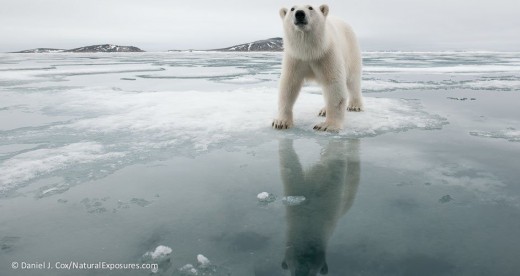
The 2,000-pound polar bear (Ursus maritimus) (Manzo, 2010) – sometimes cute and cuddly, sometimes ferocious – floating vulnerably on an island of ice as its home melts around it is the century’s iconic image of climate change.
Humans often feel a connection to bears, and it’s not just because they are cute, says McCall – it could be because we recognize ourselves in their top predator status, the way they care for their young, their intelligence, or their sometimes eerily human-like behaviors.
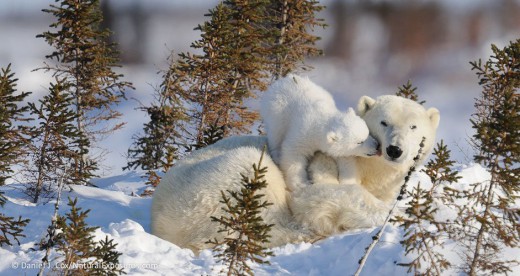
Say cheese
The harsh and inhospitable conditions of the Arctic that polar bears call home is difficult to access, making studying these mammals a mammoth task. Most early knowledge on polar bears came from distant observations, but technology is helping scientists better understand bears and other animals at close range: over the past few years, customized cameras have gathered a wealth of information on polar bear movements and habits.
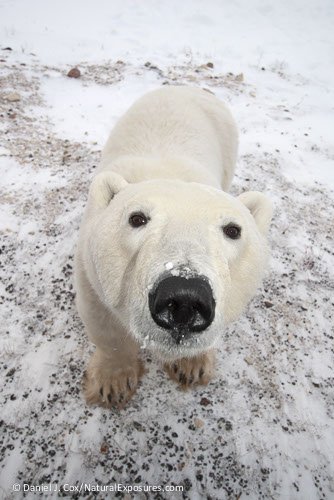
A wildlife film director and producer known for his groundbreaking filming techniques, John Downer used a series of spycams to create “Polar Bear – Spy on the Ice”, a never-seen-before look into the world of polar bears.
Despite the punishing environment, the film zooms in on polar bears thanks to a series of robotic cameras – including Blizzardcam, Snowballcam, Driftcam, and Icebergcam. These spycams can withstand unforgiving Arctic winters, and each has a unique feature.
“We used years of experience from these previous ‘Spy’ films to develop cameras for Polar Bears – Spy on the Ice,” Philip Dalton, the producer and one of the film’s cameramen, stated in an email to WildTech.
The team had two years, which included four to five weeks of four filming trips, to capture polar bears on film.
Each camera cost between UK£30,000 and £100,000 (US$48,000 – $160,000) and was sheathed in fiberglass, a report in the UK Daily Mail stated. As with other technologies used to approach large mammals, the cameras had their share of problems, as this video clip from BBC’s Polar Bear: Spy on the ice shows:
“In the beginning, some of the remote cameras suffered from the extreme cold conditions, and one of the Snow cams was completely flattened by a large curious male bear,” Dalton said. “So we had to rethink the Spy camera design to accommodate the extreme Arctic environment and the destructive force of the curious bears.”
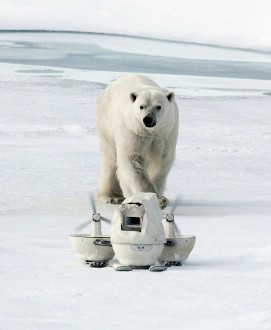
Dalton explained that his team designed Blizzardcam to move swiftly across sea ice. “The skis made it possible [for the device] to float over snow and drive over cracks in the ice without getting stuck too often.”
On board, it carried a “snowball” camera, which could be deployed remotely and rolled over snow and ice while keeping the camera relatively level. This large spherical device “…made it difficult for the bears to get their claws and teeth into”.
The cameras had to function somewhat independently, said Dalton: “Some of our small Snowcams were designed to operate autonomously, they would power up and record once a bear came within 20 metre range of it. These could be left for up to one week in the extreme cold. They even contained a satellite phone that would automatically call us on sensing a bear.
They were strengthened to withstand the bears’ crushing body weight and powerful jaws. Icebergcam was able to follow bears hunting on the sea ice and track alongside them from just a paw swipe away.”
Multiple cameras working together – a summary
|
The remote cameras did exactly what Dalton hoped they would do: get as close as possible so as to reveal detailed behavior and gain rich insight into the sensitive side of the bears’ character. The cameras captured bears hunting seals, feeding on whale carcasses, courtship behavior, and a cub’s first moments outside a den, among others. Dalton explained, “The close proximity of the cameras provided viewers with an engaging and fresh experience of polar bears that was far removed from the solitary cold killers as they have been traditionally portrayed.” These flirting polar bears are just one example:
Polar bears on thin ice
As climate change shrinks their Arctic home, rugged remote cameras will also help scientists study the effects of these changes on polar bears. These cameras have allowed researchers to study a mother and her cubs as they look for areas with more packed ice; the diet, nutrition and food requirements of land-locked bears as they hunt walrus, look for kelp, and raid bird colonies; and bears amicably sharing a washed-up whale carcass.
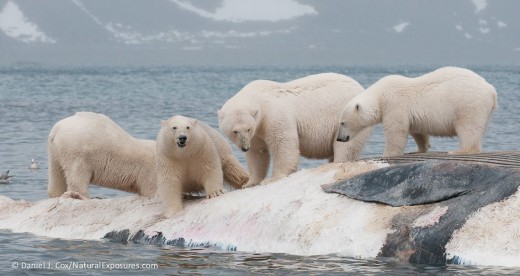
But why should we care what happens to these creatures? Perhaps because what happens in the Arctic is not going to stay in the Arctic.
Data collected by a host of NASA scientists show that, since 1992, sea levels have risen by nearly three inches, with some areas seeing a rise of more than nine inches. About one-third of that sea level rise is due to ice loss from Greenland and the Antarctic, while the remainder is from melting mountain glaciers.
Popularly known as the refrigerator to the world, the Arctic ice reflects more heat back into space than it absorbs, keeping the planet cool. As McCall states, “…we cannot create more sea ice on a whim, nor can we put a fence around it to prevent it melting.” The only way to protect the Arctic ice is to reduce greenhouse gas emissions.
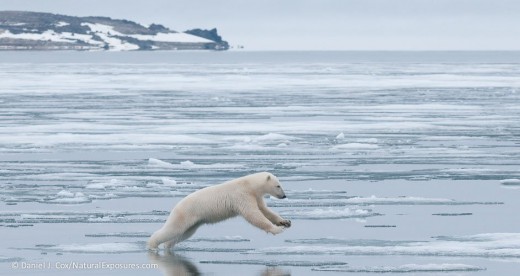
There is still hope for Arctic sea ice: a study published in Nature showed that one cold year, 2013, led to a rebound of ice in the area. Rachel Tilling, lead author of that paper, stated in an article in The Guardian that a “huge reduction” in carbon emissions could help Arctic sea ice recover. This would lead to polar bears keeping their homes, and ultimately we keeping our way of life as we know it.
Learn more about polar bears and arctic ice (plus one more video!)
Aars, J., Andersen, M., Breniere, A. and Blanc, S. (2015) White-beaked dolphins trapped in the ice and eaten by polar bears. Polar Research; 34, 26612
Iverson S. A., Gilchrist, G. H., Smith, P. A., Gaston, A. J. and Forbes, M. R. (2014) Longer ice-free seasons increase the risk of nest depredation by polar bears for colonial breeding birds in the Canadian Arctic. Proc. R. Soc. B 281: 20133128
Manzo K. (2010) Beyond polar bears? Re-envisioning climate change. Meteorol Appl 17: 196–208
Post, E., Forchhammer, M. C., Bret-Harte, M. S., et al. (2009) Ecological dynamics across the Arctic Associated with recent climate change. Science 325, 1355–1358
Rode, K. D., Robbins, C. T., Nelson, L. and Amstrup, S. C. (2015) Can polar bears use terrestrial foods to offset lost ice-based hunting opportunities? Front Ecol Environ 13(3): 138–145
Serreze, M. C., Holland, M. M., and Stroeve, J. (2007) Perspectives on the Arctic’s shrinking sea-ice cover. Science 315, 1533–1536
Stirling, I. and Derocher, A. E. (2012) Effects of climate warming on polar bears: a review of the evidence. Global Change Biology, 18 2694–2706
Stirling, I. and Meurs, Rinie van (2015) Longest recorded underwater dive by a polar bear; Polar Biol 38:1301-1304
– – – – – – – – – – – – – – – – – – – – – – – – – – – – – – – – –
One more video, this one of a ninja polar bear that “creeps” up by sea on an unsuspecting seal. Icebergcam captures the bear both under and above water swimming swiftly and keeping a low profile, until it catches the seal nearly unaware…



